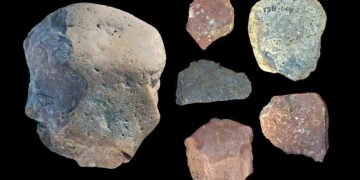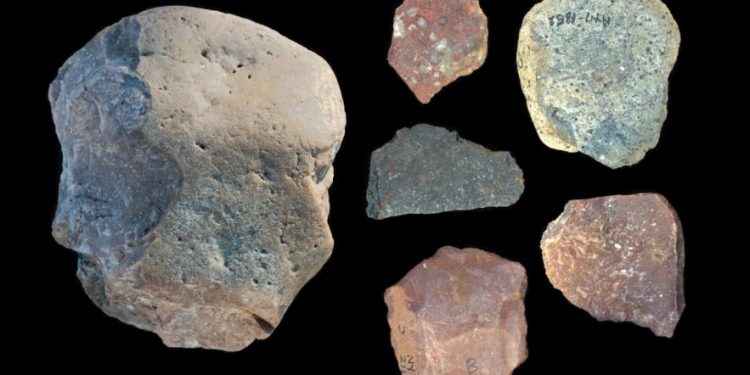By John Ikani
Archaeologists in Kenya have made a groundbreaking discovery, uncovering some of the oldest stone tools ever used by ancient humans.
Dating back approximately 2.9 million years, these tools provide evidence of the presence of other branches of early humans, not just the ancestors of Homo Sapiens.
The tools were used to butcher hippos and process plant materials, like tubers and fruit.
Two large fossil teeth found at the excavation site in Nyayanga on the Homa Peninsula in western Kenya were revealed to belong to Paranthropus, an extinct human cousin that had a combination of both ape-like and human-like traits.
The discovery of these teeth, along with 330 stone tools, has opened the case as to who created the Oldowan tools.
“The Oldowan technology was like evolving a new set of teeth outside your body,” explained Prof Rick Potts, of the Smithsonian National Museum of Natural History.
“It opened up a new variety of foods on the African savannah to our ancestors.”
Lead author of the research, anthropologist Thomas Plummer of Queens College in New York City, added, “The association of these Nyayanga tools with Paranthropus may reopen the case as to who made the oldest Oldowan tools. Perhaps not only Homo, but other kinds of hominins were processing food with Oldowan technology.”
The Oldowan tools were found to be a significant upgrade in sophistication compared to earlier, crude stone tools dated as early as 3.3 million years old, prior to the emergence of the Homo genus.
Other hominins that existed at the time included the genus Australopithecus, famous for the even-older fossil “Lucy” discovered in northern Ethiopia in 1974.


































